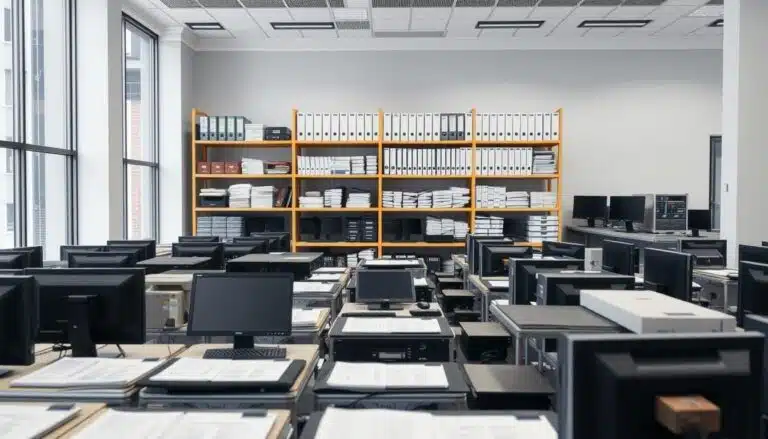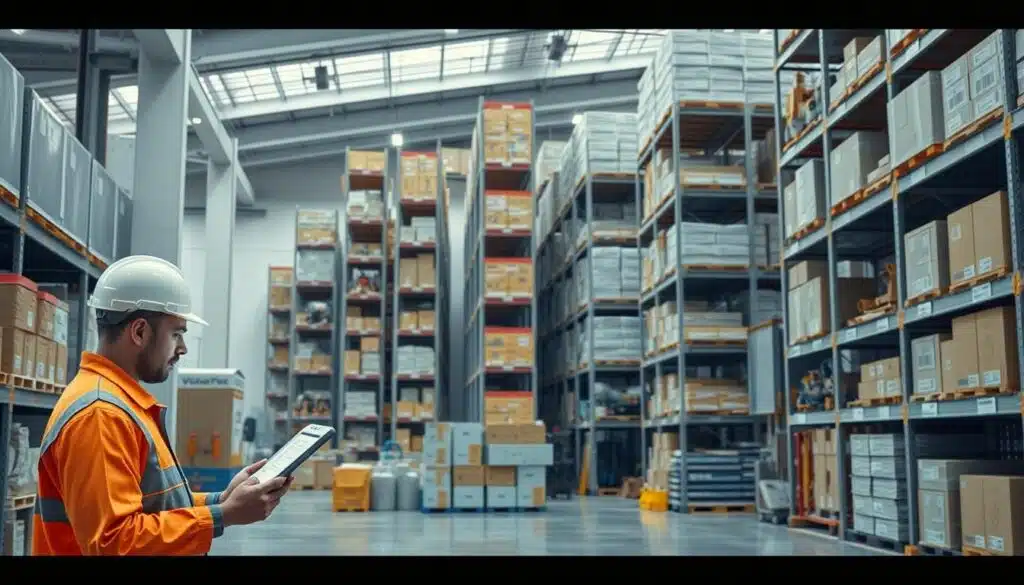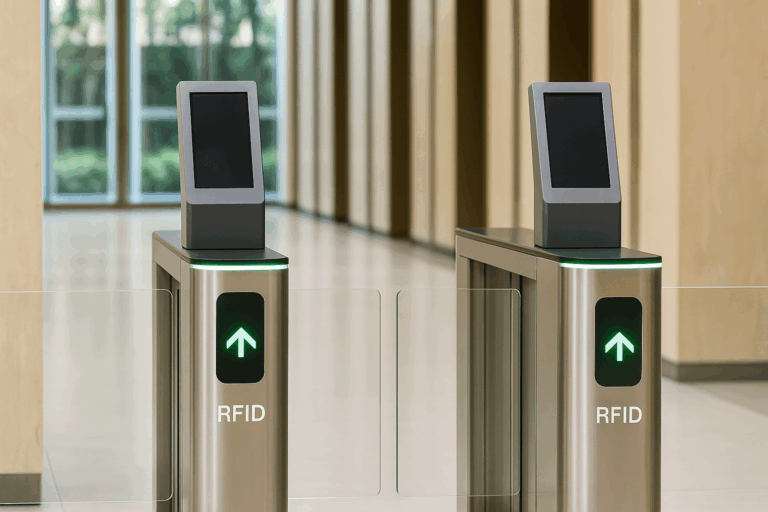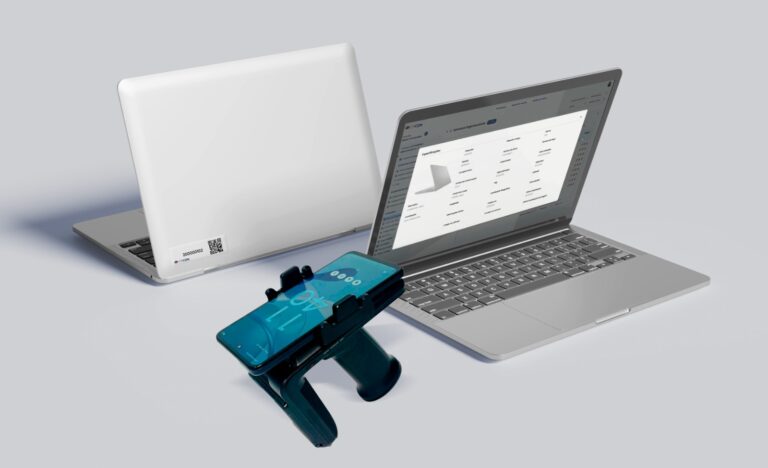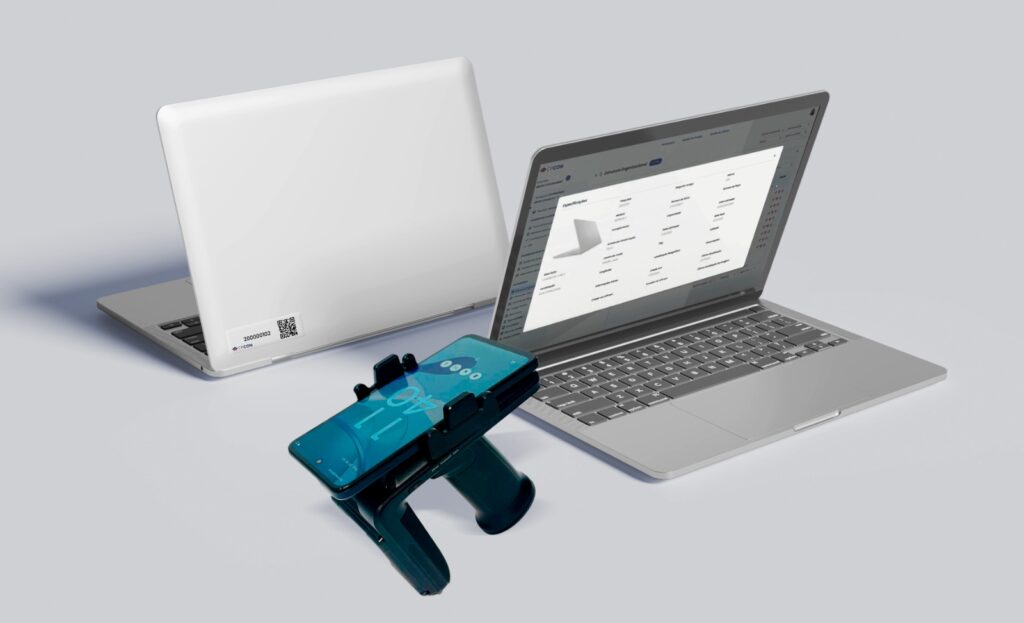Keeping your assets in check is key for any business. It helps keep operations running smoothly and finances healthy. A good fixed asset inventory lets companies use their assets better and avoid losing them.
Accurate tracking is at the heart of managing assets well. It helps businesses stay on top of their assets. This way, they can improve their financial reports and control their assets better.
Table of Contents
ToggleThe Importance of Fixed Asset Inventory Management
Every company relies on its fixed assets, which make up a big part of its value. These assets include things like machinery, vehicles, and computers, as well as patents. Knowing about fixed assets is key to keeping a company financially healthy and running smoothly.
Managing your assets well is very important. It helps your company work better and make smarter choices.
Understanding Fixed Assets
Fixed assets are long-term things a business uses to make money. They can be many different items that help the company work. Knowing what these assets are helps with financial reports and figuring out the company’s value.
Keeping a detailed list of these assets helps track their value over time. This makes planning and investing easier.
Why Accurate Asset Tracking Matters
Tracking assets accurately has many benefits. It helps follow financial rules, which lowers the risk of problems during audits. It also helps save money by reducing losses from theft or damage.
By knowing what assets they have, companies can make better choices. This improves how well the company works overall.
In short, managing fixed assets well is crucial for success. Understanding their importance is the first step to a strong asset management system.
Best Practices for Fixed Asset Inventory
Keeping a detailed fixed asset inventory is key. Companies need to follow several steps to make sure their records are right. Regular audits are important to check records, find mistakes, and keep up with changes.
Using technology, like special software and RFID, makes things more efficient and accurate. Training employees well helps create a team that takes care of assets. This approach makes asset management better.
Regular Audits and Updates
Regular audits keep asset records up to date. They help spot any mistakes and understand changes. Keeping records current shows where improvements are needed.
By spending time and resources on audits, you get a clear view of what assets you have and their condition. This is very valuable for your business.
Utilizing Technology for Efficiency
Technology makes managing assets much easier. Asset management software gives you real-time data for tracking and reporting. RFID technology makes tracking faster and more precise.
Using these tools helps streamline asset management. It makes sure everyone is responsible for their tasks. This leads to better asset tracking and management for your company.
Employee Training and Involvement
Getting employees involved is crucial for good asset management. Training them well gives them the skills to handle assets well. When they know their role, they take their job seriously.
Engaged employees lead to more accurate tracking and management. This is good for your business in the long run.
Challenges in Fixed Asset Inventory Control
Managing fixed assets is tough for companies. They face many obstacles in keeping track of their inventory. To solve these problems, it’s key to understand their causes and find good solutions.
Common Obstacles Companies Face
One big problem is manual errors when entering data. These mistakes can make inventory records wrong, affecting financial reports and decisions. Also, not having real-time tracking makes managing assets harder.
Not training staff well adds to these issues. Employees might not know how to track assets well. Poor communication between teams makes things worse, making it hard to know who’s responsible.
How to Overcome Asset Management Challenges
To beat these challenges, companies can use automated systems. These systems cut down on errors and track assets in real-time. This makes things more efficient and accurate.
Also, training employees well helps them manage assets better. When teams talk openly, they work better together. This leads to better management of fixed assets.
Fixed Asset Inventory: Streamlining Your Asset Management with RFID Technology
RFID technology changes how companies manage their assets. It lets them track assets in real-time, making inventory management more accurate and efficient. This technology also helps reduce theft, lower labor costs, and improve visibility in operations.
This section will dive into these benefits. It will also give tips on how to use RFID technology to improve asset management.
The Benefits of RFID in Asset Tracking
RFID technology offers many advantages in asset tracking. It allows for quick and accurate asset identification without needing to scan them directly. This leads to:
- More accurate inventory counts
- Less manual labor for inventory checks
- Better theft prevention
- Smarter asset management
Companies can become more productive and efficient with RFID systems. This results in cost savings and better use of resources.
Implementing RFID Solutions Effectively
To implement RFID technology well, follow some key steps. Organizations should:
- Check their current asset management systems
- Set clear goals for RFID use
- Train staff on RFID and its use
- Connect RFID with their inventory software
- Keep an eye on system performance and make improvements
By taking these steps, businesses can use RFID technology to its fullest potential. This will help them manage their assets better.
Conclusion
Effective fixed asset inventory management brings big benefits. It’s not just about tracking things. It’s about creating a system where everything is checked regularly, using technology, and training employees.
This approach ensures things are accurate and makes everyone more responsible. It also makes the workplace more efficient.
The article has shown how important it is for companies to use new methods. Using RFID technology, for example, can make managing assets much easier. It cuts down on mistakes and makes sure everyone knows what’s going on with the company’s assets.
As we wrap up, it’s clear that keeping up with new ways to manage assets is crucial. Businesses that stay ahead and use the best methods can keep a close eye on their assets. This leads to better work and more money for the company.
FAQ
What is fixed asset inventory?
Fixed asset inventory is a detailed list of an organization’s fixed assets. This includes tangible items like machinery and buildings. It also includes intangible assets like patents and trademarks. Managing this inventory well is key for good financial reporting and operational efficiency.
Why is accurate asset tracking important?
Accurate asset tracking is vital. It helps organizations make smart decisions and follow rules. It also cuts costs from loss or mismanagement. Plus, it aids in planning and investing.
What are the best practices for managing fixed asset inventories?
To manage fixed asset inventories well, conduct regular audits and updates. Use technology like asset management software and RFID for better efficiency. Also, train employees to create a culture of accountability in asset management.
What challenges do companies face in fixed asset inventory control?
Companies struggle with manual errors, lack of real-time tracking, and poor staff training. They also face miscommunication, which can cause financial errors or asset loss.
How can companies overcome asset management challenges?
Companies can beat asset management challenges by improving processes and using technology for tracking. They should also train staff better and encourage accountability at all levels.
What role does RFID technology play in fixed asset inventory?
RFID technology is a game-changer for managing fixed asset inventory. It allows for real-time tracking and updates. This leads to more accurate asset management, reducing loss or misreporting.
How do businesses implement RFID solutions effectively?
Businesses can use RFID solutions well by training staff on the technology. They should also integrate RFID with their current operations. Regularly checking the benefits helps keep inventory accurate and efficient.

